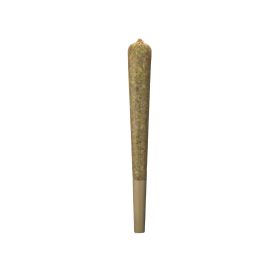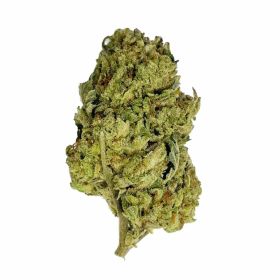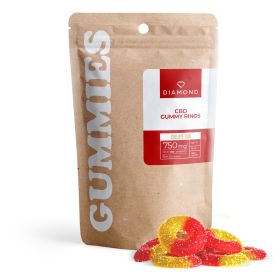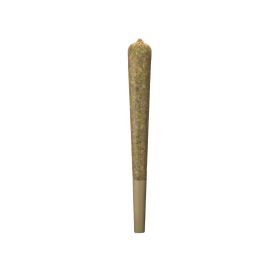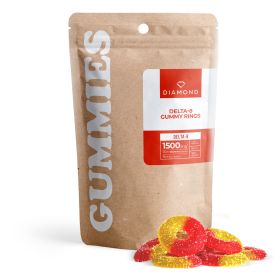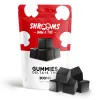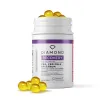CBG is a fast-up-and-coming compound in the cannabis world and is a close rival to pre-existing cannabis compounds like CBD and Delta 8 THC. Research into what is CBG has shown that CBG has therapeutic and other benefits. Benefits that other common cannabinoids don’t have. It is proving to be a safe and perhaps legal substitute for the cannabis currently in the market.
Could CBG be the new ‘it’ drug? In this comprehensive article, we discuss “what is CBG?” CBG benefits, everything there is to know about CBG, and what you stand to gain from using it.
What Does CBG Stand For?
Recently, a new cannabinoid has taken center stage in the cannabis discussion. This cannabinoid is none other than CBG, known as Cannabigerol.
Plants naturally produce several chemical compounds called phytochemicals. The phytochemicals help them resist fungi, bacterial, and viral infections. The cannabis sativa plant naturally produces over a hundred phytochemicals known as cannabinoids.
The most abundant cannabinoids are THC (tetrahydrocannabinol) and CBD (cannabidiol). They have been the subject of most medicinal research efforts to date, and they have shown excellent, natural benefits in the health and wellness of mammals. Cannabigerol (CBG) is a cannabinoid obtained from the cannabis Sativa plant. Although recently discovered, it is now referred to as the mother of all cannabinoids. There is much work providing answers to every question related to what is CBG.
We should point out that cannabigerol is not technically new, even though they have only recently discovered its benefits and attributes.

The Mother Of All Cannabinoids: How Is CBG Made?
To better understand what is CBG, let’s look at the production process. A flowering cannabis plant will begin to produce its cannabinoids around the third or fourth week of its flowering phase. This cannabinoid will not ‘come prepared for use’ but in its acidic form as cannabigerolic acid (CBGa). CBGa gets converted to its neutral state, CBG, naturally as the plant grows. External heat from sources like a lighter flame, vaporizer, or oven can also help to convert it. The name for this process is decarboxylation, and is necessary to make CBG therapeutically active.
Now, this is where things get interesting. Cannabigerolic acid (CBGa) is not the acidic precursor to CBG alone.
Continuous exposure of the plant to UV rays from the sun, CBGa transforms to THCa, CBDa, or CBCa, the acidic precursors of THC, CBD, and CBC, respectively. Over time, these chemicals can react again and turn a cannabinoid like THC into other cannabinoids like CBN and delta 8 THC. CBGa is solely responsible for hemp’s full spectrum of cannabinoids and corresponding potency.
This property is why they call CBG the mother of cannabinoids–because all other cannabinoids come from its parent molecule.
How Does CBG Work and Interact with Our Endocannabinoid System?
Cannabis sativa plants produce many compounds that interact with the human body and cause varying effects. They have been using this plant for medicinal purposes for thousands of years, but no one knew how it worked.
In 1964, two scientists, Yechiel Gaoni and Raphael Mechoulam reported that the main active component of cannabis is tetrahydrocannabinol (THC). They discovered that the exogenous cannabinoid THC acted on the brain. It works by 'muscling in on the intrinsic neuronal signaling system, mimicking a key natural player. It would then hijack it for its use. We can’t discuss what is CBG without an understanding of this system.
They also discovered that the cell-to-cell signaling molecules, their receptors, and the building up and breaking down enzymes that allow the cannabis plants to have such a widespread effect on the body were already in existence. This system in the body was then called the endogenous cannabinoid system, or the endocannabinoid system (ECS).
As was earlier said, the ECS comprises molecules, receptors, and enzymes tasked with keeping our bodies in an optimal state regardless of what is going on in the external environment. When CBG gets into the body, it mimics the natural working processes of the endocannabinoids in the body and relays messages within the ECS.
CBG can do this because of the cannabinoid receptors found naturally occurring in the body. They are of two types-CB1, and CB2, is present in nearly every human body system. CB1 receptors are mainly in the brain and nervous system, while CB2 receptors are common in the immune system. CBG interacts with these receptors to help regulate various functions, such as inflammation. This process defines CBG's ability to promote healing.
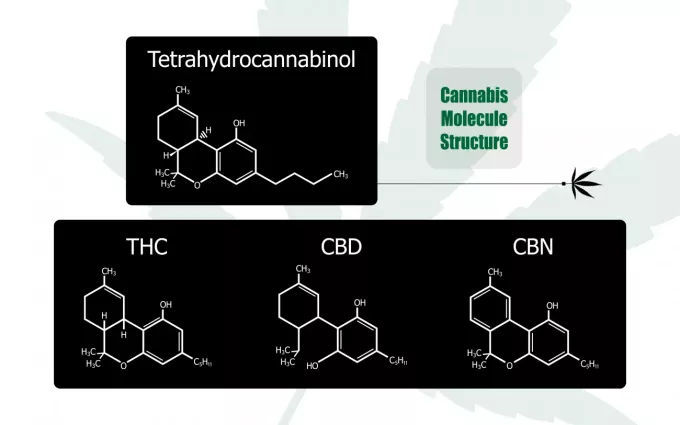
CBG Benefits - What is CBG Good For?
Studies aimed at providing answers to this question - “what is CBG good for?” are still in their early stages. Still, animal studies suggest CBG could be a neuroprotective agent that also aids bone health and pain relief. It works like its close relative, CBD, to ease pain without the psychoactive effect that another pain-relieving cannabinoid like THC has.
CBG is also said to possess anti-inflammatory, anti-tumor, and antibacterial properties and contribute to regulating the bladder and skin. A study conducted by Borrelli F, Fasolino I, Romano B, et al. in 2013 concluded that CBG should be a clinical experiment option for treating inflammatory bowel disease.
Another study conducted in 2021 shows that derivatives of CBG can treat inflammation, pain, and obesity.
As said before, we still need a lot of research in this area, but the good news is that even governments realize that now. In 2018, The National Center for Complementary and Integrative Health (NCCIH) announced plans to research less common cannabinoids such as CBG for pain management.
Take a look at the benefits of CBG:
-
CBG is a neuroprotective agent
-
It aids bone health
-
It helps in pain relief and management
-
Another benefit is that it possesses anti-inflammatory, anti-tumor, and antibacterial properties
-
It contributes to regulating the bladder and skin
-
It has therapeutic potential to treat glaucoma
CBG vs. Other Cannabinoid Products
How does CBG stack up against other cannabinoids? As we study what is CBG, let’s look at them side-by-side and find out.
| CBG vs. Other Cannabinoids |
CBG vs. CBD |
CBG vs. CBN |
CBG vs. Delta 8 |
CBG vs. Delta 10 |
|---|---|---|---|---|
|
Origin |
Cannabidiol (CBD) is from the mature cannabis plant whereas CBG is from a young cannabis plant. |
Cannabinol (CBN) is primarily present in an old cannabis plant that is stored, and you can get it from the plant's main psychoactive chemical, tetrahydrocannabinol (THC). |
Delta-8-THC is an analog of Delta-9-tetrahydrocannabinol (THC) while CBG is the parent molecule of THC. |
They process delta 10 from hemp-derived CBD. |
|
Concentration |
CBD naturally occurs in high concentrations in the cannabis plant, where CBG does not. |
CBG is present in young cannabis plants, but CBN production occurs after the plant has achieved full growth and with the help of the sun’s ultraviolet rays. |
Delta 8 is present in trace amounts in the cannabis plant. |
Delta 10 is present in trace amounts in the cannabis plant. |
|
Market Availability |
CBD is one of the most abundant cannabinoids found in the Cannabis sativa plant and is readily available as oils. |
CBN, like CBG, is not readily available because there is little research done on it so far. |
Delta 8 is readily available as oils or gummies and you can get it from stores that sell CBD. CBG is not yet readily available. |
Delta 10, just like CBG, is naturally present in trace amounts and this makes it not readily available in the market. |
|
Psychoactive properties |
CBG is like CBD in that it is not psychoactive and so does not produce a 'high.' |
CBN is ‘somewhat’ psychoactive whereas CBG is not. |
CBG will not give a ‘high’, but Delta 8 will. |
Delta 10 is psychoactive and may cause you to fail a drug test, whereas CBG will not. |
|
Function in the ECS |
CBG offers benefits like appetite stimulation, antibiotic properties, and potential treatment for MRSA bacterial infections whereas CBD helps with pain relief, reduced stress and anxiety, improved sleep, and neuroprotective attributes. |
Where CBG affects energy and helps to stimulate an improved mood, CBN is relaxing, helps promote sleep, and boosts appetite. |
CBG gives energy and improves mood while Delta 8 stimulates appetite and reduces pain. Like CBG, Delta 8 also possesses neuroprotective properties. |
CBG may suppress cytokine activity to lower both pain levels caused by inflammation and symptoms of inflammatory conditions in the body. Delta 10 also likely has anti-inflammatory properties based on its similarities to other forms of tetrahydrocannabinol (THC), such as Delta 8, which produces these effects. |
|
Similarity to CBG |
Cannabigerol (CBG) and cannabidiol (CBD) are cannabinoids obtained from the Cannabis sativa plant |
Most CBN users report feeling more awake similar to what you’d get with coffee but without the anxiety. This is similar to the ‘uplifting’ feeling that users of CBG report. |
Cannabigerol (CBG) is similar to Delta-8-tetrahydrocannabinol (Delta-8-THC) in that they are two of the most recent cannabinoids to be identified by researchers in Cannabis sativa plants. |
They both aid in fighting nausea. |
CBG Effects: Does CBG Get You High? - No, It’s Not Psychoactive!
The 'high' feeling that comes from using cannabis products is due to THC binding to the CB1 receptor and activating the release of hormones that make you 'feel good.' Hormones like serotonin, dopamine, and norepinephrine.
Research and studies of what is CBG suggests it has the potential to counteract the psychotic effect of THC by binding to the CB1 receptors and the 5HT1A serotonin receptor. This would make it a beneficial antipsychotic compound.
How Does CBG Make You Feel?
Some people who have used CBG report that the substance made them feel:
-
Uplifted
-
Energized
-
Calm
-
Soothed
-
Euphoric
These are due to the psychoactive nature of CBG. Studies on what is CBG have shown that it has the potential to activate cannabinoid receptors in the brain and nervous system.' CBG's psychoactivity doesn't induce psychotropic or intoxicating effects like THC or delta-8. Instead, it affects brain activity, changing mood and perception, which would lead to a decrease in anxiety and stress having no adverse effect on your mind or physical state.

Yes. Like the CBD laws, CBG is legal to purchase, use, and produce, as outlined in the Agriculture Improvement Act (2018) Farm Bill. This bill legalizes all cannabinoids from Cannabis sativa, but only if the plants contain no more than 0.3% THC. If it's over 0.3%, they classify the plant as marijuana, a controlled substance under Schedule I of the CSA.
Internationally, CBG is likely legal. This is because they don’t spell it out as an illegal substance under the UN Convention on Narcotic Drugs of 1961, nor is it included in the United Nations Convention on Psychotropic Substances of 1971 but just like with United States laws, only if it is from the Farm Bill compliant cannabis plants with the legal limit of 0.3% THC.
The Scarcity of CBG
Now that we know almost everything there is to know about what is CBG, what does the future hold for this unique cannabinoid? How can you use CBG as a part of your everyday life?
We have discussed "what is CBG?" and established that it is the mother of all cannabinoids. Understand that as the cannabis plant grows, CBGa converts to other compounds, and there's not enough left to make CBG. Compared to the different cannabinoids in cannabis plants, CBG is present in smaller, almost trace quantities. In most plant strains, only 1% of CBG is present compared to 20 to 25% of CBD or 25 to 30% of THC. This makes the end products gotten from CBG scarce and very expensive.
To get more CBG from the cannabis plants, farmers could harvest the plant while it’s still young and before the CBGa molecule transforms into other compounds. However, this will drastically decrease the amount of THC and CBD produced.
Another way to get a yield with more CBG is to change the crop genetically. You can do this by cross-breeding different cannabis varieties with known increased levels of CBG.
They have focused much cannabis research on THC and CBD because they are the most abundant compounds. However, over a hundred more minor cannabinoids contribute to the many health benefits of Cannabis sativa, all of which are worth investigating.
Since it is the precursor molecule of many cannabinoids and the non-psychoactive effects it has, CBG is all set as the next big compound. We will probably see and hear more about it from researchers and health experts. This is as cultivation processes like selective breeding, early crop harvesting, and CBG isolation become more popular.
When buying the product, you must do your due diligence, going over your options repeatedly. Ask for the advice of a medical practitioner before you use it in treatment. Remember that all cannabis products have different chemical constituents.
Final Thoughts On CBG
Cannabis, derived from a plant, has remained a source of controversy. There are debates on its medicinal value. There has also been controversy over its legalization and concerns about dependence.
As we have discussed in this article, CBG is one of the recently discovered cannabinoids obtained from cannabis. It might just be the missing link between the legal and ethical questions that cannabis poses and the medical benefits it can provide.

